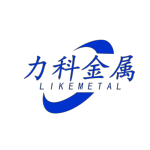Galvanized sheet refers to a thick steel plate with a layer of zinc plated on the surface. Hot-dip galvanizing is an economical and reasonable anti-rust treatment method that is often selected. About half of the world’s zinc production is used in this process.
Galvanized sheet is to avoid corrosion on the surface of the thick steel plate and increase its service life. The surface of the thick steel plate is coated with a layer of metal zinc. This type of zinc-coated thick steel plate is called galvanized sheet.
According to the production and processing methods, it can be divided into the following categories:
① Hot-dip galvanized thick steel plate. The cold-rolled steel sheet is infiltrated into the molten zinc bath, so that the surface of the cold-rolled steel sheet is adhered with a layer of zinc. At this stage, the key is to use the continuous hot-dip galvanizing process for production, that is, the thick steel plate in a plate is continuously immersed in a plating tank with molten zinc to make a galvanized sheet;
②Fine-grain reinforced galvanized sheet. This kind of thick steel plate is also produced by the hot dip method, but immediately after it is out of the tank, it is heated to about 500 ° C to convert it into an aluminum alloy plastic film of zinc and iron. This type of galvanized sheet has excellent adhesion of architectural coatings and electric welding;
③ Electro-galvanized sheet. The production of this type of galvanized sheet by electroplating has excellent process performance. However, the coating is thin, and the corrosion resistance is not as good as that of hot-dip galvanized sheet;
④Single-sided and double-sided galvanized sheet. Single and double-sided galvanized sheet, that is, goods that are hot-dip galvanized on only one side. In terms of electric welding, spraying, anti-rust treatment, production and processing, etc., it has stronger adaptability than double-sided galvanized sheet. In order to get rid of the defect of uncoated zinc on both sides, there is another kind of galvanized sheet coated with chromatographic zinc on the other side, that is, galvanized sheet with difference on both sides;
⑤ Aluminum alloy, composite galvanized sheet. It is made of zinc and other metal materials such as aluminum, lead, zinc, etc. to make aluminum alloys or even composite thick steel plates. This kind of thick steel plate has both extraordinary anti-rust treatment characteristics and excellent spraying characteristics;
In addition to the above five, there are also colorful galvanized sheet, garment printing sprayed galvanized sheet, polyethylene laminated galvanized sheet and so on. But at this stage, the most common is still hot-dip galvanized sheet.
Stainless steel plate is the general name of stainless acid-resistant steel, resistant to weak corrosion substances such as gas, steam, water, or steel grades with stainless steel properties is called stainless steel plate; while solvent-resistant substances (acid, alkali, salt and other organic chemical corrosion) ) etched steel grades are called acid-resistant steels.
Because of the difference in composition of the two, their corrosion resistance is different. Generally, stainless steel plates are generally not resistant to solvent corrosion, while acid-resistant steels generally have stainless steel properties. The term “stainless steel plate” not only simply refers to a kind of stainless steel plate, but also shows more than 100 kinds of industrially produced stainless steel plates. Each stainless steel plate developed and designed will have excellent characteristics for its special main purpose. The key to success is to figure out the primary use first, and then the appropriate steel grade. There are generally only six steel grades related to the main purpose of the building structure. They all have 17-22% chromium, and good steel grades also have nickel. Adding molybdenum further improves air corrosion and is very resistant to fluoride-containing air.
Stainless steel plate refers to steel that is resistant to weak corrosive substances such as gas, steam, and water, and organic chemical corrosive substances such as acid, alkali, and salt, also known as stainless steel acid-resistant steel. In specific applications, steel that is resistant to weak corrosive substances is often called stainless steel, and steel that is resistant to solvent corrosion is called acid-resistant steel. Because of the difference in composition between the two, the former is not necessarily resistant to solvent corrosion, while the latter is generally stainless. The corrosion resistance of stainless steel plates lies in the aluminum alloy elements contained in the steel.
Post time: May-22-2023




